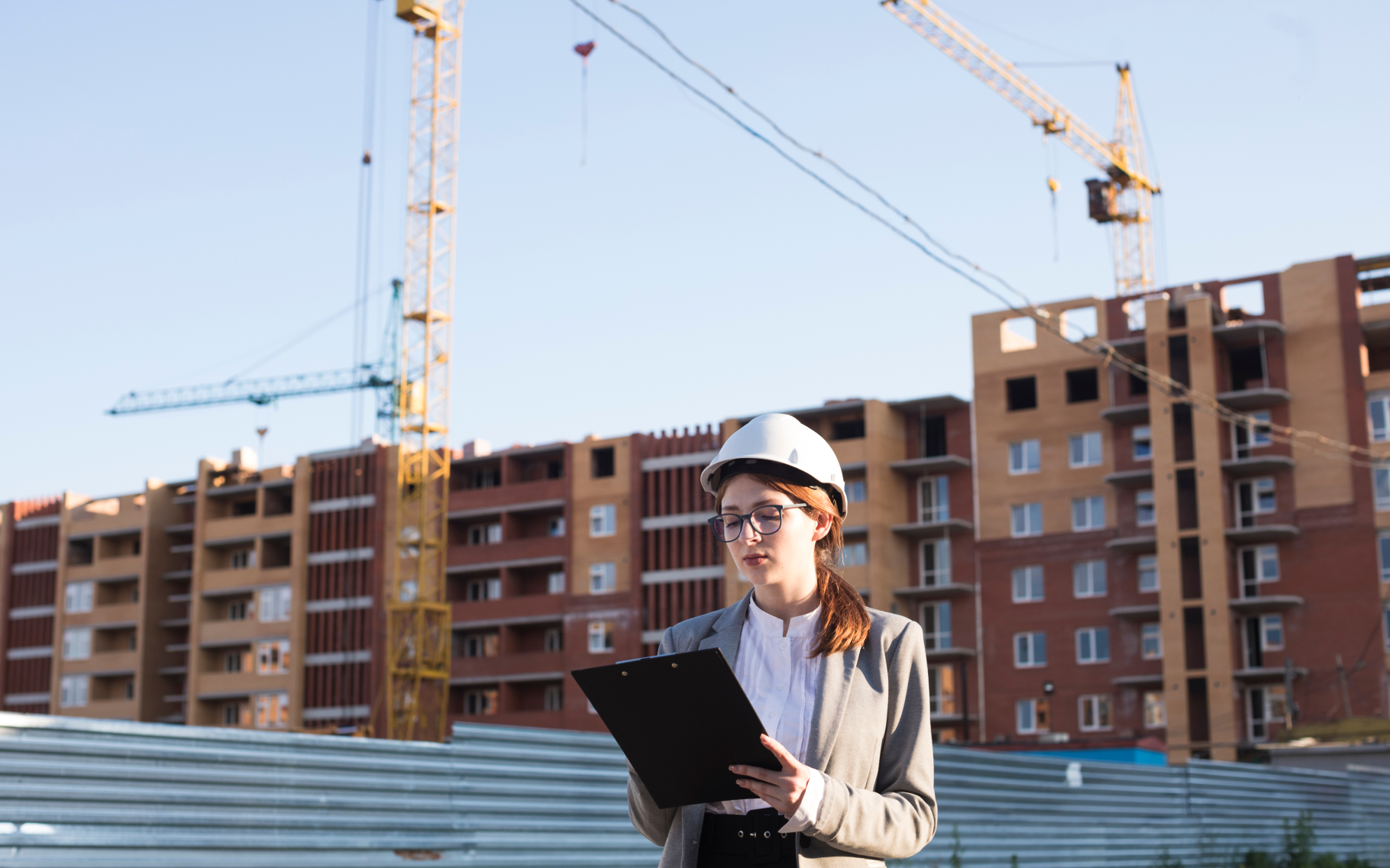While it would be much easier to start construction on a new building without having to submit any paperwork, applying for a building permit is an essential part of the construction process to ensure that your work is structurally sound from the very beginning.
The intricacies of applying for a building permit vary depending on your local municipality, but there are a few general steps you can expect for every building permit, no matter where you’re located. In this article, we discuss each of these steps and what construction teams need to do to ensure their application process goes smoothly.
What is a building permit?
A building permit is a government-issued document that allows individuals or organizations to start a construction project, such as creating a brand-new building or making renovations to an old one.
Why do I need a building permit?
Building permits are necessary to ensure the safety of occupants. Local governments enforce building codes that include specific safety measures unique to their area. For example, a building in Las Vegas has different needs than a building in Denver. Ensuring that those needs are met is important to maintaining long-term infrastructure.
How to apply for a building permit in 10 steps
Applying for building permits varies depending on the municipality where your project is located. If you’re interested in learning about your specific area, check out our municipal guides. While the processes may vary by location, the permitting process generally follows these 10 steps:
Step 1: Determine project scope
The first step is simple — what are you constructing and why? Answering this question can help you determine what kind of permit you’ll need to apply for in the future and what municipal services you’ll need access to, if necessary.
For example, creating a multi-unit property on completely undeveloped land will require more resources than a simple roofing project on a residential house. Identifying the project scope will help establish a realistic timeline for your team, contractors, and clients.
Step 2: Identify the correct permits for submission
Once you identify your project scope, the next step is to find the correct permits for submission for your designated project. Municipal organizations will often have this information listed on their local website, or in person at designated department offices.
One way to streamline this process is to use building permit software like PermitFlow. A tool like PermitFlow helps to streamline the permit submission process and identify up-front what you need to submit so your team can compile and submit everything correctly the first time.
Step 3: Develop plans and compile application materials
To receive permission from the government to begin your project, you will need to submit a full-fledged plan of your anticipated construction. The requirements for your planning documents may vary depending on the location and nature of your project, but specific components may include:
- Architectural plans for buildings or renovations
- Electrical plans
- Overall site plans for larger buildings such as campuses or parks
- Environmental impact assessments
What kind of plans you need to submit will vary depending on your construction project, and the municipality you’re located in. If you are managing multiple projects at once or applying for building permits across multiple municipalities, permit management software like PermitFlow can help keep your submissions organized.
Step 4: Submit your application including all plans and assets
Once your plans are finished, the forms are signed, and you have everything you need, it’s time to submit your application to your local government. Most local governments offer a web portal to digitally submit your project plan. Some places require an in-person appointment to review your plans.
Step 5: Application review period
This step takes up the bulk of the permit submission process. After you submit your application, you must wait for your items to be approved by the appropriate department before moving forward.
If any revisions to your plans are required, you have to make the requested changes and resubmit your application. Some changes may be minor and can be submitted through a portal or via email with a government representative. If major changes are needed, you might need to start the application process over, depending on how long it takes for your team to make the desired changes.
Step 6: Submit any necessary fees to the designated departments
Fees are just as important to the process as submitting your application documents. Failure to pay fees on time can cause delays in the process, ranging from a few days to several weeks. It’s not unusual to accidentally miss a fee submission period and delay your project.
To avoid accidentally missing a permitting fee, you can use tools like PermitFlow to help keep track of when you have any action items regarding your permit. Getting notified of a required action is much easier than having to dig through your crowded inbox for permit updates.
Step 7: Receive permit after approval
After all of your submissions are approved by the corresponding departments, you’re ready to build! Building permit approval times can range from as short as one month to as long as a year, depending on the size and complexity of your project.
Step 8: Break ground
As soon as you receive your approved permit, you can begin construction. It’s crucial to ensure that your permit is always readily available and displayed in a visible location accessible to anyone on the job site.
Step 9: Schedule inspections at designated milestones
If you have a larger project — such as a commercial or multi-unit building — your approved permit should outline when additional government inspections will be required. These inspections most commonly concern foundation work, framing, electrical work, and plumbing.
Depending on local legislation, additional inspections may be required if you need to extend your project timeline. If your permit expires, you must pause construction to avoid fines.
Regular inspections throughout the construction process help ensure your project adheres to local building codes. This prevents any major mistakes from happening too far along in the building process, which can be a time-consuming and costly mistake to fix.
Step 10: Final inspection and approval
Before you can use your new building for its intended use, it needs final approval from the government. Once your construction passes inspection, you will receive a new certificate of occupancy or approval that allows you to use the building for its intended use.
Managing permit submissions with PermitFlow
While the permit submission process can feel like a long waiting game, the process is designed to ensure your construction complies with all local regulations. Building permits are an essential part of ensuring that any new development is safe and secure for its occupants.
PermitFlow offers comprehensive solutions for managing multiple permits at once to ensure efficiency and transparency in your projects. Know exactly when permits need your attention so you can streamline the permit submission process and provide your clients with accurate timelines.
To learn how PermitFlow can streamline your permit submission process and help you navigate these complexities, speak with one of our permitting experts today.





